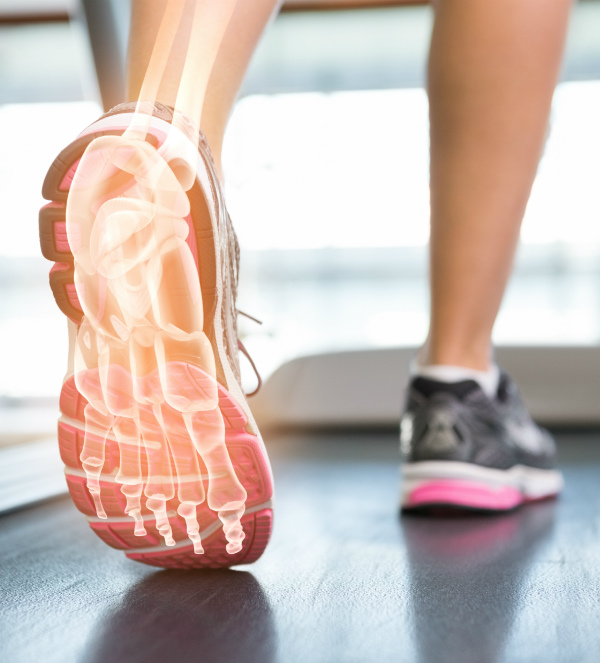When should you see a podiatrist?
Exercise is healthy, and everyone should do it! Yet if this exercise is not done correctly, this can lead to ailments and injuries. It is for this reason that anyone can see a podiatrist at any time, from children and young adults to adults and the elderly, as well as those who suffer from diabetes and arthritis. In addition, athletes of all levels and persons with lower limb and lower back complaints can also be helped by a podiatrist. Below you can find a list of some of the most common injuries for all target groups.
In adults, and in most cases, athletes
Ailments or pain in the foot or ankle:
- Plantar faciitis (jogger’s heel) and/or heel spurs
- Fat pad atrophy
- Metatarsalgia, Morton’s neuroma, tarsal tunnel and/or sinus tarsi syndrome
- Tendinitis
- Stress fractures
- Chronic ankle instability
- Bunions, hallux limitus or rigidus (restricted or loss of motion in the big toe) and sesamoïditis
- Hammer and/or claw toes
- Excessive calluses and/or corns
Ailments or pain in the lower leg:
- Achilles tendinitis
- Bursitis
- Shin splints
- Periostitis and/or Compartment syndrome
Ailments or pain in the knee:
- Jumper’s knee
- Iliotibial band syndrome and/or cartilage wear
Ailments or pain in the hip, pelvis and groin:
- Athletic pubalgia (sports hernia)
- Bursitis
Ailments in the lower back:
- Due to leg length discrepancies or pelvis rotation
For all these ailments, correction insoles can be made to measure. The podiatrist first carries out a thorough biomechanical study, which consists of discussing the patient’s history, biomechanical mobility tests of muscles and joints, and a running analysis. The insoles can be worn as a preventive measure or as a cure. However, it should be noted that suitable shoes are always essential for correction insoles to work effectively and efficiently.
For diabetes sufferers
85% of all diabetes-related amputations are the result of a badly-treated foot wound. Such foot wounds arise through a reduced feeling and blood circulation combined with abnormal pressures. Risk zones can be detected by investigating the pressure points. Foot function can also be checked using biomechanical tests and a gait analysis. In order to prevent or cure wounds, a tailor-made, pressure-relieving sole will be produced. Other aids include relieving felt or silicone orthoses. Footwear advice and accurate information are paramount in this regard.
For children
Foot therapy for children under 6-7 years is not necessary (apart from in serious cases). An incorrect gait does not always go hand in hand with pain or ailments, but can cause problems later in life. If you are in any doubt, it is always advisable to have a preventive screening as a precaution. Good to know: while children’s feet are developing, adequate footwear is essential!
Below are a number of ailments that frequently affect children:
- Sever’s disease (pain in the heel)
- Osgood-Schlatter disease (pain under the patella)
- In-toeing
- Out-toeing
- Static abnormalities (e.g. flat feet, genu valgum (knock-knee), leg length discrepancies)
Reimboursement
Podiatry currently does not have its own nomenclature, which means that, in principle, patients receive no financial contribution for podiatric treatment. However, certain health insurance providers do offer partial repayment for care either once or several times a year. Be sure to enquire at your health insurance provider! Podiatrists hold an INAMI/RIZIV identification number. As a result, diabetes patients who are referred to a doctor or specialist can, under certain conditions, receive a refund for a podiatry consultation or investigation up to twice a year.
How can a podiatrist help you?
Using various techniques, the podiatrist can help you with your complaints and ensure that these do not return in the future.
Below are just some examples:
- Corrective foot therapy after extensive research and walking and running analyses
- Stretching programmes
- Instrumental treatment or extensive foot care
- Pressure-relieving felt therapy
- Corrective or pressure-relieving silicone orthoses
- Wound care
- General and specific (footwear) advice


